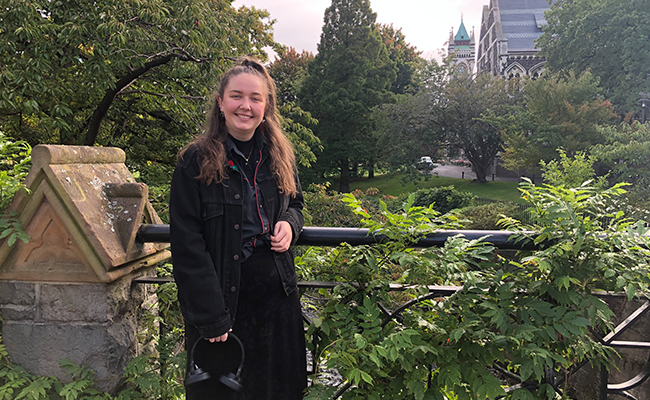Wednesday, 26 April 2023

Master's candidate Jordan Dougherty says sexual violence is often the result of social pressures, societal roles and social structures of gender.
Welcome to the second instalment in our new series 'Introducing postgraduate SGSC', which focuses on postgraduate students within the Sociology, Gender Studies and Criminology Department. In this edition we chat with Jordan Dougherty, a Master's candidate looking into the efficacy of sexual violence prevention programmes. There is a link at the end of this story to the first instalment of the series.
Are we really educating people the best way about how to prevent sexual violence?
An Otago Master's candidate is taking a closer look at how effective historical sexual violence prevention programmes, such as consent education, have been, in order to know if the ones we currently think are working are actually the best approach.
Jordan Dougherty says there have been a “huge amount” of disparate approaches to sexual violence prevention in New Zealand.
“There's a lot of consent education, there's some stuff around self-defence, there's some stuff around bystanders.”
And while the Government is putting a lot of money, resources and time into sexual violence prevention programmes, if they are not working, they need to be looked at a bit more critically, she says.
Dougherty is using feminist theory to evaluate six different programmes to see what each programme was trying to achieve, how it tried to do that and how effective it was.
Ultimately, she says, it's a matter of whether the programme address what feminist theorists know is causing sexual violence.
Consent education, for example, has been a big part of sexual violence prevention and it appeals because it's “snappy” and easy to understand.
Australian legislators want to make it mandatory in schools, but linking consent education to feminist theory shows that consent education focuses on an individual's ability to give consent, in particular, verbal consent.
But sexual violence is not happening because of miscommunication, Dougherty says, it is often the result of social pressures, societal roles and social structures of gender.
One thing she's noticed is the more specific a programme is, the seemingly more effective it is.
For example, programmes giving people skills to intervene when they see someone being aggressive or someone looking uncomfortable.
A lot of programmes just say the overall purpose is to reduce sexual violence, and while that's a very noble goal, it is very broad, she says.
People raising awareness around sexual violence prevention is not new and has been happening for decades, she notes.
In the 1960s, during the second wave of feminism, some writers started trying to define it, laying a foundation for future work. Rape crisis centres, which arrived around this time, played a pivotal role too.
Some historians have even argued suffragettes were also working to prevent sexual violence, because giving women the right to vote enabled them to vote for people who were more likely to look out for the rights of women, Dougherty says.
It is not likely there will be one programme or approach that will solve the issue, she says, but will likely be ongoing multiple approaches – including continuous education - because it's such multi-faceted problem.
-Korero by internal communications advisor, Koren Allpress